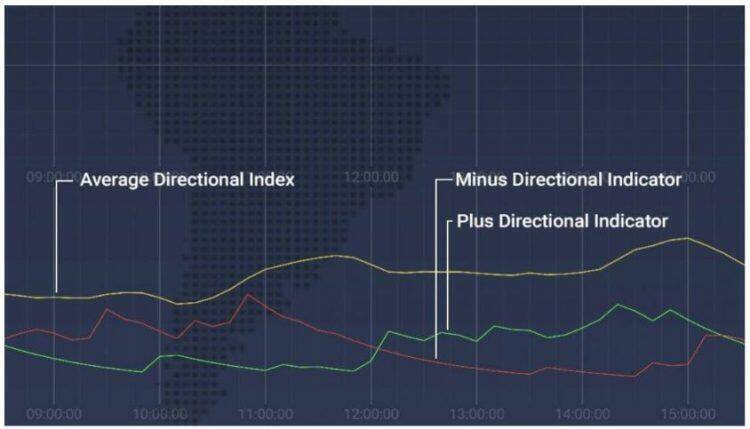Contents:


The other 1,310,720 byte program space, “app1”, is not used by your sketch and is reserved for the next OTA update. After that next OTA update with the same size code, “app1” would be 61% used, and “app0” would be reserved for the next update. I am a retired professional and I avoid it because it simply is not necessary for Arduino projects and it is not suitable for posting on this forum or other “arduino’ish” forums. So, while you or I or most other folk can utilize IDF, most probably should not if they intend to identify with the Arduino community.
Most of the time, you’ll want to use ESP32 and ESP8266 development boards. These boards come with all the needed circuitry to power the chip, connect it to your computer, a circuit to upload code easily, pins to connect peripherals, built-in power and control LEDs, and other useful features. SiLabs CP2102Freematics ESPRIT is an Arduino compatible development board based on Espressif ESP32 with additional features for telematics projects.

Were I writing a commercial application, I would not hesitate to write it using the Espressif IDF libraries. The Arduino implementation is essentially wrappers around IDF code. I’d say move on with the project as-is, don’t have anxiety about problem you don’t have and are unlikely to have. Maybe even take advantage of FreeRTOS techniques as it’s loaded into the processor whether you use it or not. People create lots of large, sophisticated ESP32 projects without resource issues.
Arduino Compass with HMC5883L Magnetometer
Some of the features between them are the same as WiFi support but ESP8266 lacks behind in Bluetooth module and security. The ESP8266 designed by Espressif Systems is an integrated WiFi SoC solution that meets user demand for efficient power usage and a compact design board for IoT industry applications. It integrates all components required to make a fully functional IoT based WiFi device. Register in our brand new ESP32 course with Arduino IDE. This is our complete guide to program the ESP32 with Arduino IDE, including projects, tips, and tricks! Although it doesn’t have as many functionalities, it works just fine for most simple DIY IoT projects.
SiLabs CP2102NESP32-LyraTD-MSC (previously ESP32-LyraTD-MS1) is a circular board for audio playback & recording intended to be used in an “Alexa type” product. ESP32-LyraTD-MSC will be the first ESP32-Lyra board approved for public release. There have been several different ESP32-Lyra boards developed internally — varying in physical form and technical specifications.
However, you can choose from many other models of development boards. Seeing all the above comparisons, ESP32 is by far better than ESP8266. As it leads in most of the features with a greater number of CPU cores, faster WiFi and Bluetooth support. And not only that it comes with double the number of GPIO pins compared to ESP8266.
In our opinion, programming the ESP32 is as easy as the ESP8266, especially if you plan to program it in the Arduino language or MicroPython. The ESP32 is more powerful than the ESP8266, contains more GPIOs with multiple functions, faster Wi-Fi, and also supports Bluetooth. Also, since it’s “older” and therefore more supported on the software side, you might find it easier to find help.
My issue was with importing Arduino IDE created files into Platformio. I have many many Arduino files and libraries and I was concerned with loosing or changing them to conform to Platformio and not being able to recover them. You can import older sketches into PIO, you just have to make a few changes, like adding arduino include and changing the .ino file to .cpp.
Available with either 4 MiB flash (using ESP-32S-ALB module) or 16 MiB flash (using ALB-WROOM module). Second voltage regulator for power on / power off sensors through a dedicated GPIO. Similar to, but slightly different than, Heltec Automation’s WIFI LoRa 32 board.
Using the Arduino IDE to get started with an ESP32 or ESP8266 and have your first project running is very simple. Additionally, the ESP32 contains 10 capacitive sensing GPIOs that detect touch and can be used to trigger events, or wake the ESP32 from deep sleep. This is possible because of the multiplexing capabilities of the ESP32 chip that allow you to assign multiple functions to the same pin.
Industrial, Commercial, and General Consumer Devices
The ESP8285 module is a continuation of the ESP8266 line and has a higher degree of integration and reduced dimensions. With the same functionality, the ESP8285 chip has a 1MB program memory operating in DUOT mode. The microcontroller usually lacks a full-fledged operating system. It is designed to perform a range of tasks recorded in the firmware in the memory of the device. IoT was very much everywhere amongst radio amateurs, electronic engineers, and software engineers. Several open-source projects are now available on the Internet, which can be assembled in just a couple of hours.
The Processor Cores column above lists number of cores for the central processor; this number excludes the ULP co-processor. SeeECO and Workarounds for Bugs in ESP32for differences between revision 0 and revision 1. For information on the ESP31B prototype/beta chip,visit the Historical page. ESP32-S0WDESP32-S0WD is a variation with a single-core (instead of dual-core) processor. The ESP32 SoC is housed in surface-mount, Quad-Flat No-leads packages in either 6×6 mm² or 5×5 mm² sizes with 48+1 connection pads . Physical package footprint/dimensions can be found in chapter 6 of theESP32 Datasheet.All ESP32 chips thus far have been manufactured using TSMC’s ultra-low power 40nm process.
- S32V234-EVB2-D | NXP 32-bit Arm Cortex-A53 vision processor with ISP, powerful 3D GPU, dual APEX-2 vision accelerat…
- Has more GPIOs than the ESP8266, and you can decide which pins are UART, I2C, SPI – you need to set this in your code.
- However, it has some limitations in terms of GPIO mapping and it may not have enough pins for what you intend to do.
- Add Wi-Fi, Bluetooth , and low-power consumption, and we have the bestseller among microcontrollers.
Not to be confused with the previously releasedP-ESP32,P-ESP32B, and P-ESP32C boards, which are merely basic breakout boards without buttons nor other components. SiLabs CP2102Features four pin headers for each of the ESP-WROOM-32 module’s pins, Arduino Uno compatible header, USB-to-UART, support for an external power supply with high-current voltage regulator, and diagnostic LEDs. SiLabs CP2102ESP32 based development board for use with an Arducam camera module. ESP-WROOM-32SiLabs CP2102Compact, small development board/module with USB-to-UART, LDO regulator, and EN & Boot buttons.
Price: Which Board Offers the Most Value?
I like the https://traderoom.info/32 especially if I need more IO and ADC channels, but the converter is really bad. I need heavy averaging to get a decent stable result. That’s OK if I just want to know if a slow value is in a not so exact range, but nothing to really measure something. In general I am not supper happy with PWM outputs of the ESP32. I would really prefer to have more versatility, a bit higher frequency available in hardware, and ability to adjust phases between channels. Maybe it can be done, but docs are a bit weird about it.

SiLabs CP2102Open source hardware ESP32-based Arduino Uno style development board with microSD card slot, DC power barrel jack, battery connector & charger, USB connector, and more. The boards don’t use the same code so you can’t compare the differences. If the code works, there are no bugs that need to be checked. Remember that the esp32 is a dual core chip and the ESP8266 is a single core chip. The ESP32 runs all it’s wifi function on one core while, by default at least, the arduino sketch runs on the other. There is a lot more code necessary to get that to work.
The ESP32 family includes the chips ESP32-D0WDQ6(and ESP32-D0WD), ESP32-D2WD, ESP32-S0WD, and the system in package ESP32-PICO-D4. At its heart, there’s a dual-core or single-core Tensilica Xtensa LX6 microprocessor with a clock rate of up to 240 MHz. ESP32 is highly integrated with built-in antenna switches, RF balun, power amplifier, low-noise receive amplifier, filters, and power management modules. It also has common peripherals and supports the protocols like the I2C, ADC, SPI and UART. It adds an extra CPU core, faster Wi-Fi, more GPIOs, and supports Bluetooth 4.2 and Bluetooth low energy.
In terms of cost, both are low-cost products, but the cost of ESP32 is slightly higher, and the cost of ESP32 is twice that of ESP8266. Since the ESP8266 has been on the market for a longer time, it can get more support in terms of software and will be easier to use and more compatible. However, the ESP8266 has some limitations in GPIO mapping and does not have enough pins to operate. Our more common ESP32 and ESP8266 development boards are the ESP32 DEVKIT DOIT Development Board and the ESP8266 ESP-12E NodeMCU Kit, and these are the ones we recommend for beginners.
While you can use the Arduino IDE to program both boards, they may not be compatible with the same libraries and commands. Currently, both boards can be programmed using the Arduino IDE programming environment. If you don’t set them on the code, they will be on the pins defined by default as shown in the image below (this is an example for the ESP32 DEVKIT V1 DOIT board – pin locations may vary by manufacturer). The ESP32 has more GPIO than the ESP8266, you can decide which pins UART, I2C, SPI – you just need to set the code. The best part is that they come with wireless networking, which sets them apart from other microcontrollers like Arduino. These WiFi modules all come with GPIO and support various protocols such as SPI, I2C, UART, etc.
While the esp32 vs esp826632 can cost around $6 to $12, the ESP8266 can cost $4 to $6 (but it really depends on where you get them and what model you’re buying).
Installing ESP32/ESP8266 Libraries on PlatformIO IDE
Do you have the same guides for getting the ESP32 programmed for MQTT? The ESP32 has more GPIOs than the ESP8266, and you can decide which pins are UART, I2C, SPI—you need to set that on the code. This is possible due to the ESP32 chip’s multiplexing feature that allows you to assign multiple functions to the same pin. The ESP32 is a dual-core 160MHz to 240MHz CPU, whereas the ESP8266 is a single-core processor that runs at 80MHz. International System of Quantities notation is used to represent the measure of data described on this page. Notably, International Electrotechnical Commission definedbinary prefixes are used where appropriate; International System of Units definedmetric prefixes are used where appropriate.

In this article, we’ll compare the ESP32 with the ESP8266 and cover the pros and cons of each board. You can attempt to get the “chip ID” from the target board using esptool.py. €3.00 each for qty 500 or more.ESP32-D2WDAnalogLamb$3.70Electrodragon$3.30Select model from “Choose an option” pop-up menu on seller’s page.Grid Connect$3.25Minimum order qty 10.Watterott€4.24Includes 19% VAT. EveiaEveiaA smart pedal exercise machine withESP32 based wireless connectivity. The CORE2 model incorporates an ESP32-based module for Wi-Fi and Bluetooth connectivity. NOA LabsESP-32S Module Adapter Breakout BoardSimple breakout board compatible with ESP-WROOM-32 and ESP-32S footprint.
The Raspberry Pi Pico also allows you a bit more flexibility in choosing your power supply. It provides two low-power modes, dormant mode and sleep mode. The dormant mode uses even less power but requires an external trigger to wake. Depending on where you’re buying from, you can generally find both boards for sale at more or less the same price. However, the connectivity features included in the ESP32 make it a better bargain for the same price.
Raspberry Pi Pico Overview
Out of Stock; estimated shipment 2017 Dec 19.Kilobyte on Tindie$4.99Ships from Switzerland.MakestroRp59000Olimex€6.00€4.80 each for qty 50 or more.Tronixlabs AustraliaAU$7.95Includes GST.Watterott€6.00Includes 19% VAT. 550 or more.Contact Espressif sales for distributors.Minimum order quantity direct from Espressif is listed at 550 pieces. SiLabs CP2104Rectangular board with ESP32-WROVER module, CODEC , six-axis (gyro + accelerometer) MEMS motion tracking (MPU-6050), Li-Ion battery charger , SD card slot, USB-to-UART bridge , and Micro USB connector. SiLabs CP2102ESP32 based development board in the Arduino Uno form factor style.
For most Arduino-knowledgable users, the Official Espressif core for Arduino is more than adequate. For the ESP board I used the ‘Adafruit ESP32 Feather’ in the board selector. I installed VS CODE, PlatformIO IDE, I’m recording on DOIT ESP32 DEVKIT V1, everything works perfectly.